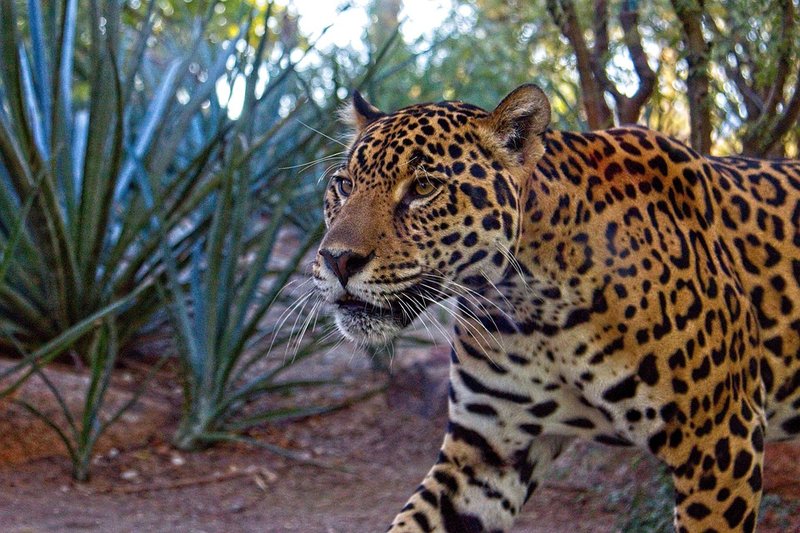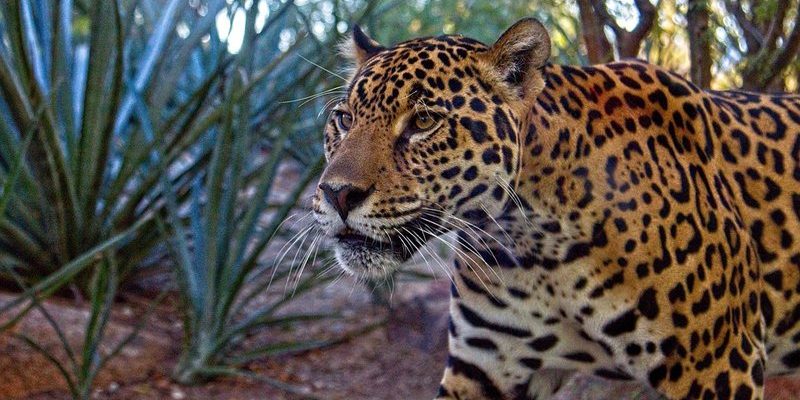
When you think of big cats, the leopard often stands out with its striking coat and agile prowess. This beautiful creature is not just eye-catching; it’s also an integral part of many ecosystems. With a reputation for being both elusive and powerful, leopards are fascinating animals to explore. In this article, we’ll delve into what makes the leopard so unique, covering everything from their physical features and behaviors to their habitats and conservation status.
The leopard, scientifically known as Panthera pardus, is a large cat native to various regions across Africa and parts of Asia. They are known for their incredible adaptability, which allows them to thrive in diverse habitats, from savannas and grasslands to forests and mountains. Imagine a creature that can effortlessly blend into its surroundings, thanks to its stunning rosette-patterned fur. That’s the leopard for you—nature’s ultimate student of camouflage.
| Species: | Panthera pardus |
| Size: | Up to 6.1 feet in length, excluding the tail |
| Weight: | Between 66 to 176 pounds |
| Habitat: | Savannas, forests, mountains, and grasslands |
| Diet: | Carnivorous: deer, antelope, and smaller mammals |
| Top Speed: | Up to 36 mph in short bursts |
| Lifespan: | 15-20 years in the wild |
Physical Characteristics of Leopards
Leopards are often celebrated for their stunning physical attributes. Their fur is a rich golden-yellow, spotted with black rosettes, giving them a beautiful yet functional appearance. The rosettes not only enhance their beauty but also serve a purpose—acting as camouflage in the varied environments they inhabit. When you see a leopard lounging on a sunlit rock, you might not even realize it’s there until it moves. This natural disguise helps them sneak up on prey and evade larger predators.
Additionally, leopards are known for their robust yet sleek physiques. They possess powerful forelimbs and sharp retractable claws, making them excellent climbers and hunters. Their tails are long and muscular, serving as a balance aid that allows them to navigate through trees and rocky terrains with agility. Imagine trying to make your way through a forest filled with branches and rocks; a leopard’s tail helps it maintain stability even in the toughest spots.
This incredible feline also exhibits sexual dimorphism, with males typically larger than females. Adult males can weigh between 110 to 176 pounds, while females are usually around 66 to 132 pounds. A full-grown male leopard can reach lengths of about 6.1 feet, not including the tail. Their size, combined with their powerful build, gives them an aura of both grace and strength—making them one of nature’s most impressive hunters.
Habitat and Range
Leopards are incredibly adaptable, which is part of what makes them so successful as a species. They can be found in a variety of environments across Africa and parts of Asia. From the lush forests of India to the dry savannas of the Serengeti, leopards have a remarkable ability to thrive wherever they roam. Their preference usually leans toward areas that provide ample cover—like dense vegetation or tree canopies—allowing them to hide from potential threats and stalk prey efficiently.
Interestingly, leopards are also excellent climbers. They spend a good portion of their time in trees, where they can be safe from larger predators such as lions and hyenas, and they often drag their kills up into higher branches to keep them away from scavengers. Can you picture a leopard skillfully hoisting a hefty impala into the branches of a tree? This impressive feat showcases their strength and resourcefulness in the wild.
Sadly, habitat loss due to human encroachment and poaching poses significant threats to leopards. As forests are cleared for agriculture or urban development, these beautiful creatures find themselves with fewer places to roam and hunt. Conservation efforts are essential to protect their habitats and ensure the survival of future generations of leopards.
Diet and Hunting Behavior
Leopards are carnivorous hunters that primarily feed on medium-sized mammals, though their diet can vary greatly depending on their habitat and the available prey. They typically hunt animals like deer, antelope, and smaller mammals, but they are known to eat birds and reptiles when necessary. Their adaptability in diet is another reason why they thrive in diverse environments.
Their hunting technique is both strategic and stealthy. Leopards tend to stalk their prey quietly, using their excellent eyesight and hearing to locate potential meals. Once they’re close enough, they launch a surprise attack. This often involves a swift sprint that can reach speeds of up to 36 mph. Imagine the thrill of being a leopard on the prowl—every step is calculated, and each leap is a test of agility. But the hunt isn’t over once they catch something; they often need to drag their prey up into trees to protect it from scavengers.
After a successful hunt, leopards can consume large amounts of food, often eating up to 20% of their body weight in one sitting. This remarkable capacity is crucial for their survival, especially since they might not eat again for several days. Their ability to store food in trees not only serves as a safety measure but also allows them to feast at their leisure—what a clever strategy!
Social Behavior and Reproduction
Leopards are generally solitary animals. They prefer to live and hunt alone, marking their territory with scents and scratches to ward off other leopards. However, they do come together for mating and raising cubs. Typically, female leopards will give birth to 2-4 cubs after a gestation period of about 90-105 days. These cubs are born blind and rely heavily on their mothers for care and protection in the early stages of life.
Mother leopards are fiercely protective of their young. They will often move them to different dens to keep them safe from potential threats. For the first few months, the cubs stay hidden, and only when they’re older do they venture out with their mother to learn the ways of the wild. Can you picture those playful little cubs learning to stalk their first prey under their mother’s watchful eye? It’s a beautiful life lesson in the wild.
As they grow, the cubs will eventually reach independence and leave their mother to establish their own territories. This transition is critical, as it ensures genetic diversity among leopard populations. While leopards may not be social in the traditional sense, they have complex interactions and are vital for maintaining a balanced ecosystem.
Conservation Status and Threats
Despite being highly adaptable, leopards face numerous threats that have led to their declining populations in some areas. Habitat loss due to agriculture, urban development, and deforestation is a significant concern. The encroachment into their natural habitats leads to fragmentation, making it difficult for leopards to find mates and hunt efficiently.
Poaching also poses a serious risk, as leopards are hunted for their beautiful fur and body parts, which are often used in traditional medicine or as trophies. Illegal wildlife trade can severely impact their numbers, and without intervention, these majestic cats may face extinction in the wild. It’s disheartening to think about the future of such a magnificent creature hanging in the balance.
Conservation efforts are underway in many regions to protect leopards. Organizations work to establish protected areas, promote coexistence between humans and wildlife, and educate communities about the importance of preserving these incredible animals. If we all contribute to conservation efforts, there’s hope for the future of the leopard and the ecosystems they inhabit.
FAQ
What is the primary habitat of leopards?
Leopards are incredibly adaptable and can thrive in various habitats, including savannas, grasslands, forests, and mountainous areas. They prefer places with dense cover, which allows them to hunt and hide from larger predators. This adaptability contributes to their successful distribution across Africa and parts of Asia.
How do leopards communicate?
Leopards use a combination of vocalizations, scent markings, and body language to communicate. They are known to make growls, roars, and even harsh cough-like sounds to establish territory or communicate with potential mates. Scent marking is also crucial, as they leave their scent through urine and scratch marks on trees to signal their presence to others.
Are leopards social animals?
Leopards are generally solitary, preferring to hunt and live alone. However, they do come together for mating and to raise their cubs. Female leopards are very protective of their young and will often move them to different locations to keep them safe from threats.
What do leopards eat?
Leopards are carnivorous and primarily feed on medium-sized mammals such as deer and antelope. They are highly skilled hunters, employing stealth and strength to catch their prey. Leopards can adapt their diet based on availability and will also eat smaller animals, birds, and even reptiles when necessary.
How fast can a leopard run?
Leopards are capable of reaching speeds of up to 36 miles per hour in short bursts. This speed is essential during hunts, allowing them to chase down prey quickly. However, they rely more on stealth and cunning rather than sheer speed to catch their food.
What are some threats to leopard populations?
Leopard populations face several threats, including habitat loss due to agricultural expansion, urban development, and deforestation. Additionally, poaching for their beautiful fur and body parts poses a significant risk. Conservation efforts are crucial to mitigating these threats and ensuring the leopard’s survival.
How long do leopards live?
In the wild, leopards typically live about 15 to 20 years, depending on factors such as habitat, food availability, and threats from other predators. In captivity, where they are protected from dangers and provided with a steady food supply, they can live longer, sometimes exceeding 20 years.
Are leopards endangered?
While leopards are classified as ‘Near Threatened’ by the International Union for Conservation of Nature (IUCN), their populations are declining in many areas due to threats such as habitat loss and poaching. Conservation efforts are working to protect their populations and natural habitats, but ongoing commitment is necessary.
Can leopards climb trees?
Yes, leopards are exceptional climbers. They often climb trees to escape larger predators, store food, or find a place to rest. Their long, muscular tails help them maintain balance while navigating through branches, showcasing their grace and agility in the treetops.
Do leopards have any natural predators?
Leopards have few natural predators due to their strength and stealth. However, they can be threatened by larger predators like lions and hyenas, particularly when prey is scarce. Young cubs are more vulnerable and are often at risk from these larger carnivores and other threats in their environment.

